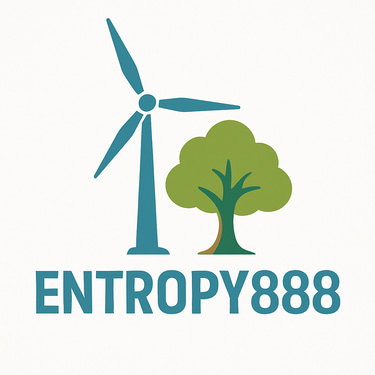The Economics of Zero-Cost Energy: How Surplus Power Becomes Digital Gold
In the renewable age, energy is no longer scarce — it’s often wasted. Every day, gigawatts of clean power are lost because the grid can’t absorb them. Turbines stop spinning, panels are disconnected, and rivers flow past idle hydro turbines. But what if that surplus energy could be transformed into value — instantly, anywhere, anytime? That’s what Bitcoin mining does. It turns zero-cost energy into digital gold.
SUSTAINABLE BITCOIN MININGRENEWABLE ENERGY & BITCOIN MINING
Chris Boubalos
10/23/2025
The Hidden Cost of Abundance
The paradox of renewables is simple: abundance can destroy value.
When the sun shines and the wind blows, energy prices collapse.
During these moments, producers are sometimes forced to sell electricity at near-zero — or even negative — prices.
Grid operators call it “curtailment.”
For energy producers, it’s lost revenue.
For Bitcoin miners, it’s a golden opportunity.
From Waste to Wealth
Bitcoin mining acts as a universal energy sink.
Wherever there’s electricity with no buyer, mining can step in, absorb it, and convert it into digital value.
This creates a feedback loop:
The grid stays balanced.
The producer earns revenue.
The energy becomes productive.
It’s a model where abundance fuels value creation, not waste.
The True Value of Zero-Cost Power
When energy costs approach zero, mining profitability skyrockets.
Unlike traditional consumers, miners don’t need 24/7 supply — they thrive on flexibility.
A hydro plant, wind farm, or solar park with variable output can:
Sell power to the grid when prices are high.
Divert surplus to mining when prices drop.
This dual strategy turns volatility into advantage.
Economic Synergy for Producers
Zero-cost energy isn’t just theoretical — it’s a strategic asset.
By integrating Bitcoin mining:
Hydro plants monetize overflow without harming grid stability.
Solar farms capture midday surpluses.
Wind operators turn night-time peaks into profit.
Instead of shutting down production, they keep generating — and earning.
This raises overall ROI, making renewable projects more attractive for investors and lenders.
Why “Zero Cost” Doesn’t Mean “Zero Value”
In traditional markets, low prices mean weakness.
In energy–Bitcoin economics, they mean opportunity.
When energy supply is abundant, its economic value to the grid drops — but its potential value to mining rises.
Mining converts those “lost” megawatts into financial value stored as Bitcoin — a globally liquid asset that never expires, decays, or depends on local buyers.
This is how zero-cost power becomes digital gold.
Broader Impact
The economics ripple outward:
Investors see stronger, more resilient renewable portfolios.
Communities gain new jobs and tax revenue.
Grids become more stable with flexible load balancing.
The planet benefits from 100% utilization of clean power.
Bitcoin mining, far from wasting energy, actually ensures that no clean energy goes to waste.
The Entropy888 Model
At Entropy888, we specialize in co-locating modular mining farms next to renewable plants.
Our systems are designed to:
Run only on surplus or low-cost renewable energy.
Operate dynamically with grid fluctuations.
Share profits with energy producers through transparent partnerships.
The result:
Renewable producers earn more, the grid stabilizes, and every watt of green energy creates both digital and environmental value.
Conclusion
The future of energy isn’t just about production — it’s about utilization.
Every kilowatt counts. Every surplus matters.
In the economics of the 21st century, zero-cost energy is no longer a problem — it’s a resource.
And Bitcoin mining is the mechanism that turns that resource into real, lasting wealth.
At Entropy888, we call this the new alchemy:
Turning surplus power into digital gold — and digital gold into planetary regeneration.
👉 Partner with Entropy888 to transform your renewable energy into sustainable value.
Contact
© 2025 Entropy888. All rights reserved.
Powered by Renewable Energy.
Christos Boubalos - Business Development Lead +306972 885885 mob/whatsapp
christos@entropy888.com
-------------------------------------------
General Enquiries - info@entropy888.com
